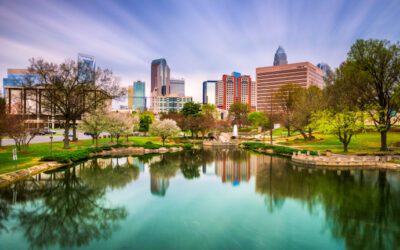Some people dream of moving to Honolulu for a life of sunshine, friendly people and outdoor living. While the city really is a wonderful place to live, newcomers should be prepared for a very different culture and way of life.
Before you arrive, here’s some inside information you should know.
1. IT’S PRONOUNCED HOE-NO-LU-LU
Not Ha-na-lu-lu. The first two syllables rhyme. You’ll hear other transplants mispronouncing it, but now you don’t have to.
2. ISLAND LIFE IS UNIQUE
When you live on an island you run into the same people over and over, which makes island life a little friendlier, a little gentler. It’s rare to hear people honk their car horns. They say hello on the street. It’s a great way to live.
3. THERE’S A PARADISE TAX
You might not notice it much if you move from San Francisco or New York City, but otherwise the cost of living may astound you. Housing, food, and the cost of shipping – we call it the “paradise tax.” But there are ways to watch your pennies. Look at homes on the less expensive, west side of the island (Kapolei, Makakilo, Ewa) instead of in pricey Manoa or Kahala. Get a smaller place or live with a roommate. Eat well at a local food truck instead of a pricey restaurant.
4. ‘OHANA REALLY DOES MEAN FAMILY
Lilo and Stitch didn’t make it up – Honolulu has a strong sense of community. People tend to look after one another. Neighbors share bananas or papayas from their trees. People call their (unrelated) elders “Aunty” and “Uncle.” Respect local ways and you may make friends who become your extended ‘ohana for life.
5. THERE ARE ONLY TWO SEASONS
If you need changing leaves and a white Christmas, Honolulu is not your spot. The island has two seasons – summer or the dry season, (May to October) and winter, which is the rainy season (November to April). Temperatures are warm year-round and the gentle trade winds are refreshing.
6. LIFE MOVES SLOWER
Aggressive Type-As aren’t a great fit for laid-back, easygoing Honolulu, where everything happens at a slower pace. People walk slower. Drivers let other cars merge. Things move more gradually at the business level too. Relax and let it work out.
7. ONE WORD: TRAFFIC
Speaking of slower, traffic in Honolulu is, officially, second only to Los Angeles. Honolulu has a limited number of roads but a seemingly endless number of cars. Consider living near your work. Try to work off-hours. Listen to audiobooks in the car.
Traffic Disaster Master Karl Kim Explains Honolulu’s Carmageddon For You http://t.co/CMfCgsLF0R pic.twitter.com/Ndw7V11tM7
— Oahu (@Oahurr) August 4, 2015
8. IT’S MULTICULTURAL
No matter where you live in Honolulu, you will probably have neighbors from many cultures. There are, of course, Hawaiians; that term should only be used to describe someone if they descend from Native Hawaiians. Non-natives born or living in the state are Hawaii residents. There are also lots of Chinese, Japanese, Korean, Filipino, Portuguese and other peoples in Hawaii. You’ll hear many languages spoken and experience great food, music and art from all over.
9. THERE ARE BUGS
There’s no way to sugarcoat this one: Seeing a cockroach in your house has to do with living in the subtropics, not your cleanliness. There are also spiders and mosquitoes. The good news is there are no native snake species!
The happy-faced spider from Hawaii.
(Photo: Darlyne Murawski) pic.twitter.com/o37cNn8doS
— Strange Animals (@Strange_Animals) June 16, 2016
10. PEOPLE TALK DIFFERENTLY
Some people speak “Pidgin English” (although everyone understands English). Properly a creole language, it developed on sugar plantations when workers from different countries needed to communicate with each other and the boss. Pidgin uses words from English, Hawaiian, and some of the other common languages. Don’t try to speak it right away because you’ll sound ridiculous. The language has its own grammar and is more complex than many realize.
11. STRATEGIZE ABOUT SCHOOLS
If you have school-age children, know that many of Hawaii’s public schools rank below the national average. A higher percentage of children attend private school in Hawaii than in the rest of the country. Do your research when you’re looking for a place to live, though, because some public schools do better than others.
12. THE FOOD IS ‘ONO!
‘Ono means “delicious” in Hawaiian and it’s what the local fruits and vegetables are. Hawaii is also the only state that grows coffee, so there is great locally grown and roasted coffee, too. Have a ubiquitous plate lunch for a tasty, inexpensive meal that includes meat, rice and usually macaroni salad. And try Hawaiian food, such as a delicious laulau (a pork, beef or chicken filling, sometimes with salted butterfish, that’s wrapped in several taro leaves and then steamed).
Delicious ? (@ Ohana Dish in Honolulu, HI) https://t.co/r6Truw0cXs pic.twitter.com/moGsf01088
— Эльхан PITMAN (@Elkhan_PITMAN) August 24, 2016
13. GETTING DIRECTIONS
People don’t say north, south, east and west in Hawaii. Instead, they tell you to “turn mauka” or “go makai.” Mauka is the Hawaiian phrase for “toward the mountain,” meaning inland. Makai means “toward the sea.” The main freeway is called the H1, and people might tell you to take the H1 Diamond Head (meaning east toward Diamond Head), or say “go Ewa” (pronounced eh-vuh) which means to head west toward the Ewa district.
14. NO DAYLIGHT SAVINGS TIME
In Hawaii we don’t change our clocks for daylight savings time. We do keep an eye on what the rest of the U.S. does, so we know whether we are two hours different than West Coast time and five hours from the East Coast, or three and six hours. Nobody messes with Hawaii Standard Time. It’s standard.
15. LOCALS GET DISCOUNTS
Get your Hawaii driver’s license right away so you don’t have to pay visitor prices. Showing your Hawaii license often gets you a discount, which is called a “kama‘aina rate.”
16. OUTDOOR ACTIVITIES ABOUND
By law, all beaches in Hawaii are public, and you’ll find that different ones have white, black, green or pink sand. Hawaii’s ocean temperature is always moderate – it averages 77 degrees in winter and 82 in summer. You can swim, bodysurf and snorkel without a wetsuit, parasail, swim near sea turtles, or go boating. If you like playing outdoors, this is your spot.
17. CASUAL ALOHA WEAR
Hawaii’s dress code is casual. Even official business is conducted in aloha wear (meaning Hawaiian shirts and dresses). You rarely need a tie or formal gown in Hawaii, and in fact can wear your slippers most places. (Other people call them flip-flops, but call them that here and you’ll sound like a tourist.)
Kuli, the one-eyed cat, has been surfing waves for over a year in Honolulu, Hawaii pic.twitter.com/93czKqXfyC
— Life With Dogs (@1_LifeWith_Dog) March 22, 2016
18. THERE ARE RULES ABOUT BRINGING PETS
Hawaii doesn’t have rabies, so the state has had a stringent quarantine requirement for pets brought here – until recently. If you plan ahead, you can now bring your pet straight home from the airport with you. Know that some of the required blood tests and vaccinations must be done at least 120 days before your arrival, though. Otherwise your pet will be held at the quarantine station for up to four months.
19. YOU AREN’T ON VACATION WHEN YOU LIVE HERE
When you work in an office five days a week, it’s not all beaches and mai tais. But some people find a way to surf before work or work nights, and others make the most of their weekends. It’s still a great place to live!
Perfect for Hawaii: MT @FastCompany: For work/life balance, @Quiksilver now makes a business suit you can surf in http://t.co/2oFmNjd8aH
— PCATT (@PCATTTweet) April 24, 2015
20. THE ALOHA SPIRIT IS REAL
“Aloha” is a Hawaiian word meaning hello and goodbye, but it’s so much more than that. It’s also a way of living one’s life with goodwill, which you’ll understand better after you’ve been in Honolulu for awhile. Learn about Hawaiian culture, show respect and emulate the aloha around you, and you will fit right in and have a warm and positive time in Hawaii.


